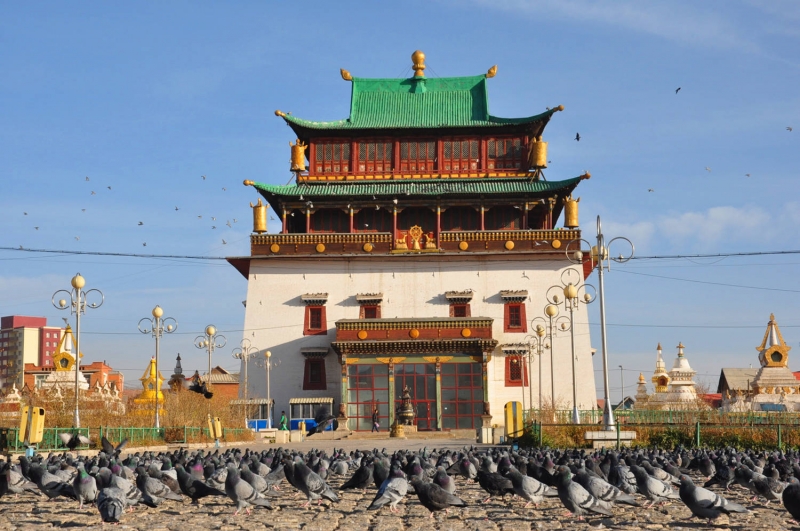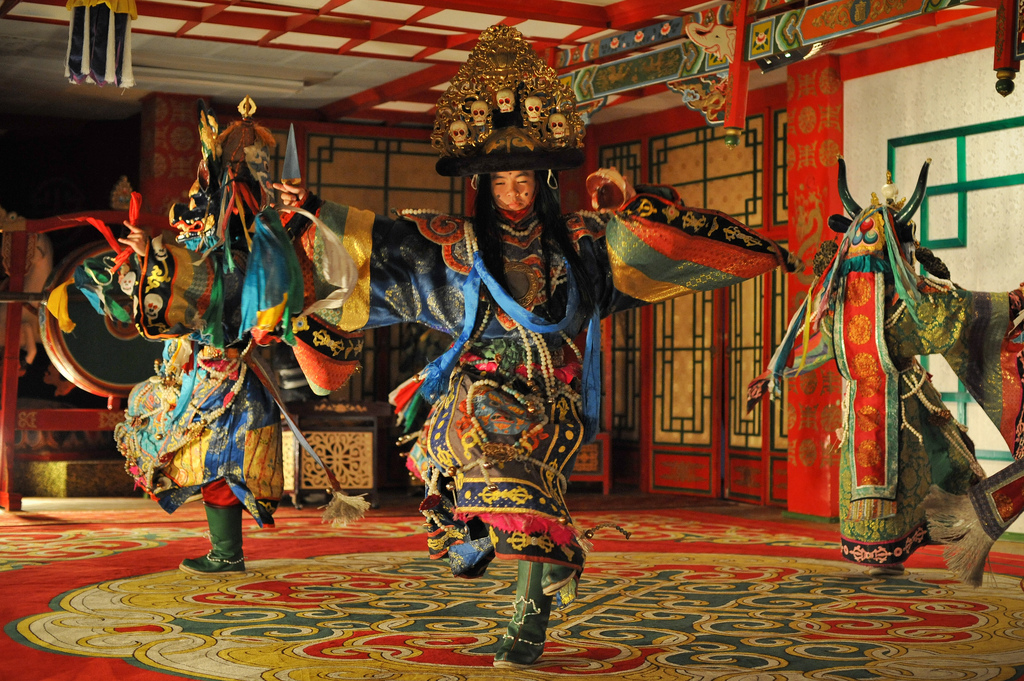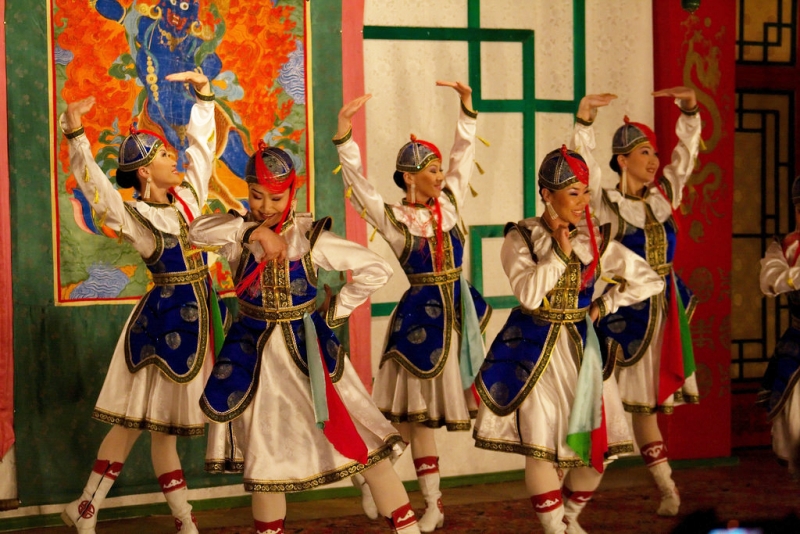MONGOLIAN HISTORY AND CULTURE MUSEUM

The National History Museum, formerly named “Museum of the Revolution”, opened in 1991. It has important collections of nomadic or sacred art, the craft industry, and domestic and technical objects (used for breeding, for example), and is a very good introduction to the history of Mongolia from Prehistory to nowadays. Among the 15.000 museum pieces, we can notably see some carpets and silk objects dating back from the Huns period, and some leather boots belonging to a Mongolian soldier of this period.
The first floor is dedicated to the old history, with a beautiful collection of petroglyphs and deer stones, and some exhibitions of Khunnu and Uyghur funeral sites.
The second floor shows clothes, objects, and jewels, of the different Mongolian ethnic groups. An entire gallery is dedicated to the exhibition of the traditional costumes, hats, and jewels, of the different Mongolian ethnic groups.
The third floor will delight the lovers of Genghis Khan and the Mongolian hordes. The collection includes the letters between Pope Innocent IV and Guytik Khan, written in Latin and Persian, dated the 13th of November 1246, and bearing the stamp of the Khan. We can also see an exhibition about the Mongolian traditional culture with, notably, a furnished yurt, tools for traditional agriculture and domestic life, saddles, and musical instruments.
GANDAN MONASTERY

It is the largest and most significant monastery in Mongolia. The first temple of the monastery was built in 1809 and moved to the present location in 1838. Over the next century, the monastery grew to include nine institutes, and a library and housed around 5000 monks. Gandan became an important center for learning and practicing Buddha’s teachings in Mongolia.
Gandantegchinlen Khiid monastery, having escaped this mass destruction, was closed in 1938, but then reopened in 1944 and was allowed to continue as the only functioning Buddhist monastery, under a skeleton staff, as a token homage to traditional Mongolian culture and religion. With the end of Marxism in Mongolia in 1990, restrictions on worship were lifted.
Statue The original statue, made of copper, was built after appeals to the Mongolian public; it intended to restore the sight of the 8th Jebtsundamba, also known as Bogd Khan), who had claimed the title of Emperor of Mongolia. The statue was built by Bogd Javzandamba’s principal minister, Chin Wan Khanddorj. Russian troops dismantled the original statue in 1938. After the end of the Soviet era, the statue of Avalokiteśvara was rebuilt in 1996, funded by donations by the Mongolian people. It features 2,286 precious stones and is gilded with gold leaf. Since 1992, the Supreme Leader of the Centre of All Mongolian Buddhists and Abbot of Gandantegchinlen Monastery has been Lama Gabju Choijamts Demberel. The monastery is surrounded by the Gandan Ger suburb.
TUMEN EKH NATIONAL ENSEMBLE
Tumen Ekh is the name of a revered traditional long song that opens ceremonies and festivals. Tumen Ekh means ‘leader of ten thousand’. Tumen Ekh is the title bestowed upon the fastest racehorse in Mongolia, a symbol of power and speed.
Tumen Ekh is also the name of Mongolia’s best folk song and dance ensemble.
The Tumen Ekh ensemble was founded in 1989 and has gone on to win awards across the world. The ensemble’s goal is to present a rare selection of ancient Mongolian performing arts and culture to local and international audiences, particularly younger generations.
The ensemble comprises artists who perform all types of Mongolian songs, music, and dance. They play traditional instruments including the morin khuur (horse head fiddle) and perform Mongolian long songs, epic and eulogy songs, a ritualistic shaman ritual dance, an ancient palace dance, and a Tsam mask dance. Their performances are highly professional but retain the authenticity and traditions of nomadic culture.
The music of Mongolia expresses vastness, freedom, and life in harmony with nature and the environment. The Tumen Ekh ensemble is one of the most successful folk art groups to share traditional Mongolian music with the world, having traveled to over 40 countries to introduce the unique, vibrant, and astonishing art of Mongolia. They have successfully performed at the World Music Center in New York, the Kennedy Center in Washington D.C., and Buckingham Palace in the UK among others. But Tumen Ekh is more than just a group of performers on a stage. Members of the ensemble participate in cultural exchanges, conduct research and studies on folklore, and engage in training and creative activities.
The Tumen Ekh ensemble will take you on a brief tour of Mongolia’s world of folk art, where vast steppes of grassland, clear blue skies, and a nomadic way of life have been developed and preserved for thousands of years.



 Naranchuluun
Naranchuluun 
